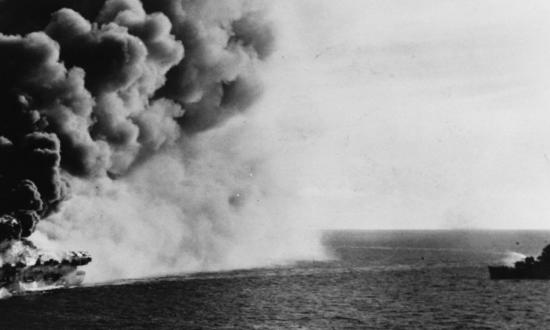While researching uniforms in storage, a curator at the Smithsonian Institution’s National Museum of American History recently made a remarkable discovery: a uniform coat belonging to the 19th Commandant of the Marine Corps, Clifton B. “Lucky” Cates.
How the uniform happened to make its way to the Smithsonian and then sit in storage unknown for decades is a true rags-to-riches story.
In the early 1970s, Donald Kloster, an associate curator in the Division of Military History, was interested in expanding the museum’s collection of military uniforms. The majority of the collection at the time dated to the 19th and early 20th centuries. Outside of World War I, the museum simply did not have a rich collection of uniforms worn in the interwar period through World War II and Vietnam.
Kloster, wanting to change this, reached out to the registrar of the Pennsylvania Historic Commission, Bruce Bazelon. Together they discussed Kloster’s collecting plans, and Bazelon put him in touch with Edward Rubin, owner of the Rubin Brothers Waste Company in Harrisburg. Rubin Brothers specialized in textile recycling—collecting then processing discarded clothing into scrap rags for a variety of purposes.
From 1972 to 1982, employees at the Harrisburg warehouses screened the incoming textiles for military uniforms. These were organized into categories prepared by Kloster. Donated by Edward Rubin, the uniforms came in batches to the museum, and thereafter Kloster and other staff catalogued them by type. No effort was made to identify the provenance or previous ownership of any garment.
In November 2021, curators in the museum’s Division of Political and Military History began reexamining the Rubin Brothers uniforms to see if any identifying information could be found on the uniforms acquired in the 1970s. Dr. Frank Blazich, curator of military history, said he “struck gold” when he checked the inner pocket of a Marine Corps officers’ service coat and found a tailor tag neatly typed to read “C.B. Cates, Colonel U.S.M.C.” dated 20 January 1941.
During this period in his career, Cates served as director of the Marine Officers Basic School at the Philadelphia Navy Yard. The tailor of the coat, the Horstmann Uniform Company, was based in Philadelphia.
How did this coat from Cates end up discarded in the trash? The uniform was accessioned in 1977, having arrived at the museum in July 1976. The interior shoulders have considerable wear and lining repairs.
A key clue is found inside the right shoulder pocket, a stenciled name reading “D. B. Kaag.” This likely refers to Donald Bricker Kaag of Reading, Pennsylvania, a mustang officer in the Marine Corps with service in World War II and Korea. Kaag passed away in 2004 in Florida. The likely scenario then is Cates parted ways with this uniform coat in the 1940s or 1950s and Kaag acquired it secondhand. Sometime in the mid-1970s, Kaag discarded the coat in the trash, perhaps unaware of its previous owner; it ended up in the Rubin Brothers warehouse and then, finally, the Smithsonian.







